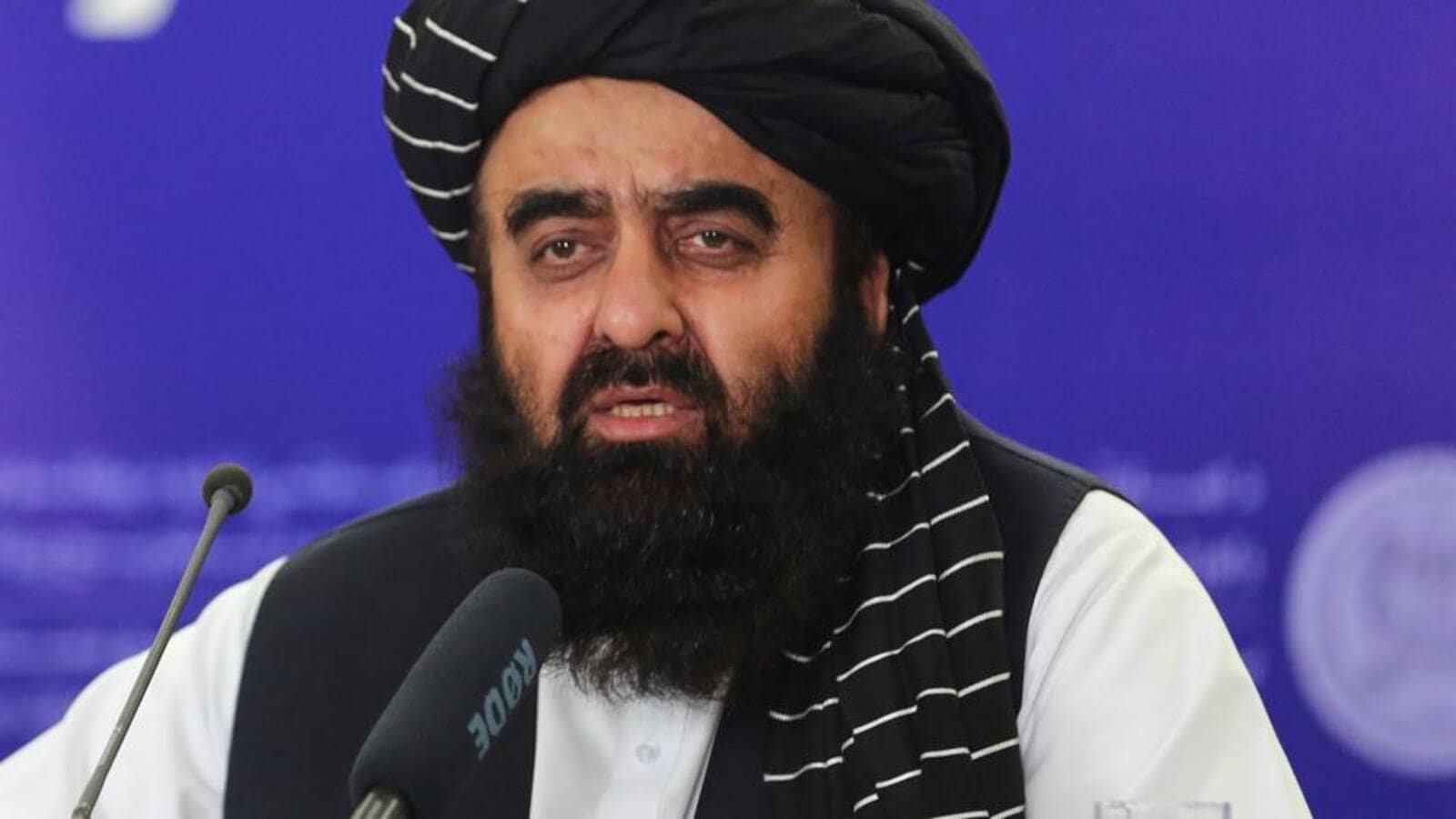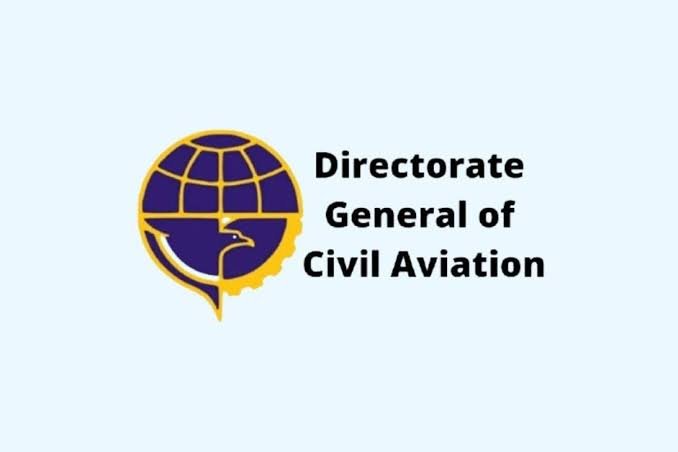Travel Guides & Articles
Air India Express Reluctantly Pulls Amritsar-Bangkok Flight: A Disheartening Case Study in the Struggles of Maintaining Non-Hub International Routes

Sunday, July 27, 2025
Air India Express (IX) has announced the suspension of its non-stop flight between Amritsar (ATQ) and Bangkok Suvarnabhumi (BKK), effective August 2025. This decision follows a continued struggle with low passenger demand and a passenger load factor (PLF) that failed to meet expectations. Between January and May 2025, the route carried only 16,993 passengers, resulting in a disappointing PLF of 67.27%. This marks a significant setback for Southeast Asia connectivity from Amritsar, a city known for its religious and cultural significance, and highlights challenges airlines face in maintaining sustainable international routes.
As the demand for flights on this route has remained weak, Air India Express has decided to close bookings beyond July 30, 2025. This follows similar moves by other airlines such as Batik Air Malaysia, which is also exiting the Kuala Lumpur (KUL) to Amritsar (ATQ) sector. Both airlines’ departures signal a growing concern regarding the long-term viability of direct Southeast Asia services from Amritsar, particularly in light of fluctuating passenger flows and structural market challenges.
Key Details of the Suspension:
- Route Affected: Amritsar (ATQ) to Bangkok Suvarnabhumi (BKK)
- Suspension Date: Effective August 2025, with flight bookings closed after July 30, 2025
- Passenger Load Factor: 67.27% between January and May 2025
- Total Passengers: 16,993 passengers transported during the period
- Route Challenges: Low demand, lack of premium business traffic, and weak onward connectivity
The suspension of the Amritsar to Bangkok route underscores the difficulties of operating international flights on non-hub routes, where reliance on point-to-point traffic often leads to instability and poor profitability. As a result, airlines must reconsider their strategies to maintain profitable international services from cities like Amritsar.
Challenges Faced by Air India Express on the Amritsar-Bangkok Route
Despite the competitive fares offered by Air India Express, the Amritsar-Bangkok route continued to underperform, leading to the eventual suspension. The route’s failure to achieve consistent passenger numbers is attributed to several key factors, including price sensitivity, low premium and business class demand, and minimal onward connectivity options for passengers traveling beyond Bangkok.
Low Yield and Inconsistent Demand
The average return fare on the Amritsar-Bangkok route ranged from US$170 to US$220, indicating low yields for the airline. These low fares, while attractive to leisure travelers, failed to generate enough revenue to cover the operational costs of the route, especially with low load factors.
The route also lacked a strong base of business travelers, who typically generate higher revenue for airlines, further compounding the airline’s financial challenges. Additionally, the absence of connecting flights to other Southeast Asian destinations made the service reliant solely on point-to-point demand, which proved insufficient to sustain profitability.
Seasonal Fluctuations and Dependence on Leisure Travel
The performance of the Amritsar-Bangkok route was heavily influenced by seasonal fluctuations. The peak periods, typically driven by leisure travelers, group bookings, and seasonal tours, saw brief spikes in demand. However, during the off-season, demand dropped significantly, leading to unstable traffic patterns. The lack of a consistent, year-round demand for flights has made it difficult for Air India Express to keep the route economically viable.
This situation was further exacerbated by weak onward connectivity from Bangkok, which hindered the ability of the airline to capture additional traffic from passengers traveling to other parts of Southeast Asia or connecting destinations.
Air India Express Shifts Focus to More Viable Routes
In response to the ongoing challenges, Air India Express will continue to operate routes from Pune (PNQ), Surat (STV), and Lucknow (LKO) to Bangkok, cities that show more consistent and stable demand. These routes, which feature stronger diaspora links, business traffic, and better year-round demand, have been deemed more commercially viable. By focusing on these markets, Air India Express aims to strengthen its position in the Southeast Asia market and reduce its reliance on underperforming routes.
Additionally, Air India Express has restructured its network to cater more effectively to profitable international sectors, leveraging better demand balance, stronger traffic flows, and improved yield management. These changes are expected to provide the airline with a more sustainable route network, while improving overall profitability.
Competitive Landscape and Regional Airline Challenges
Air India Express is not the only carrier to face difficulties on the Amritsar-Southeast Asia route. Thai Lion Air, which operates four weekly services between Amritsar and Bangkok Don Mueang (DMK), has also experienced lackluster performance. From November 2024 to May 2025, Thai Lion Air carried 26,775 passengers, achieving a PLF of only 63.09%, despite a temporary boost in traffic during the peak travel months of March and April. This mirrors the struggles of Air India Express, with both airlines seeing similar challenges in maintaining consistent demand.
The reliance on tourist traffic, especially during peak periods, without a solid base of repeat business customers or premium-class demand, has made the Amritsar-Southeast Asia routes financially unfeasible for these carriers. The absence of strong connecting networks at either end of the routes, compounded by a lack of hub connectivity, has further amplified the challenges of sustaining long-haul services from smaller, non-hub cities like Amritsar.
Southeast Asia Connectivity: A Continued Challenge for Amritsar
The suspension of Air India Express flights from Amritsar to Bangkok highlights a broader trend in the region: despite the growing demand for international travel, smaller cities outside of India’s major hubs struggle to maintain profitable international routes. Southeast Asia remains a popular destination for Indian travelers, especially for tourism, business, and cultural exchanges. However, as seen with Amritsar’s declining flight numbers, the viability of such routes is hindered by several market realities, including:
- Point-to-Point Traffic Dependency: Airlines operating direct flights without onward connectivity face greater difficulty in sustaining profitable routes.
- Price Sensitivity: With low average ticket prices, it is harder for airlines to generate sufficient revenue to cover operational costs.
- Seasonality: The fluctuating demand tied to peak travel seasons, without consistent year-round traffic, makes it difficult for airlines to rely on such routes for profitability.
These challenges highlight the need for strategic adjustments by both carriers and airports to ensure sustained connectivity between smaller cities and Southeast Asia. A potential solution lies in developing stronger regional alliances, improving hub connectivity, and creating tailored marketing efforts that target the right customer segments.
The Future of Amritsar’s International Connectivity
As the suspension of Air India Express’s Amritsar-Bangkok flight makes clear, airlines must carefully evaluate the demand dynamics and long-term sustainability of routes before launching or maintaining international services. While Amritsar holds cultural and religious significance, which draws many tourists, the city’s role as an international hub is still evolving.
To succeed in the future, Amritsar’s international routes will need to address the challenges of low yield, seasonal fluctuations, and limited onward connectivity. Airport authorities and airlines may need to collaborate on creating more sustainable travel patterns, focusing on stronger demand segments, including business travel, and leveraging better connectivity options at both departure and destination points.
Conclusion: Strategic Shifts for Long-Term Success
The suspension of the Amritsar to Bangkok flight by Air India Express and the withdrawal of other regional carriers from Southeast Asia routes reflects broader industry challenges. As the market for international travel continues to evolve, especially from smaller cities like Amritsar, airlines must implement more nuanced strategies to ensure the profitability of their services.
By focusing on more commercially viable routes and adjusting their offerings to align with sustainable demand patterns, airlines can improve their long-term success in this competitive sector. For Amritsar, the road ahead will require better connectivity options, strategic partnerships, and a more diversified approach to market development if it is to secure its place in Southeast Asia’s bustling travel market.
Travel Guides & Articles
Taliban minister planned India visit; Pak-led UN panel rejects travel ban waiver

NEW DELHI: Taliban foreign minister Amir Khan Muttaqi called off a planned visit to India this month after failing to secure a waiver to a travel ban imposed under UN Security Council sanctions, people familiar with the matter said.
If the visit had gone ahead, Muttaqi would have been the first minister from the Taliban setup in Kabul to travel to India since the group seized power in Afghanistan after the collapse of the Ashraf Ghani government in August 2021. All Taliban leaders sanctioned by the UN Security Council have to secure a waiver for foreign travel.
Pakistan currently heads the 1988 sanctions committee of the UN Security Council that oversees the implementation of the travel ban, an assets freeze, and an arms embargo related to sanctioned Taliban leaders, and the people cited above said on condition of anonymity that Islamabad is believed to have been behind the move to deny Muttaqi a waiver.
Also Read: Trump says India, Russia ‘lost’ to ‘darkest China’. New Delhi says no comments
The 1988 sanctions committee includes all 15 members of the Security Council, and a waiver can be blocked if even one member objects to it. Muttaqi’s planned visit to Pakistan last month was called off after the US reportedly objected to a waiver.
When external affairs ministry spokesperson Randhir Jaiswal was asked at a weekly media briefing about reports of Muttaqi’s planned visit to India, he replied: “As you are aware, we have longstanding ties with the people of Afghanistan. India continues to support the aspirations and developmental needs of the Afghan people.
“We continue to have engagements with Afghan authorities. If there is an update on this account, we will share it with you.”
The people said a waiver for Muttaqi was sought from the 1988 sanctions committee but it wasn’t granted. The planned visit to India was being seen as a follow-up to a phone call between Muttaqi and external affairs minister S Jaishankar in May – the first such interaction between the two sides.
Also Read: India will ‘undoubtedly’ keep buying Russian oil, says Nirmala Sitharaman
The phone conversation also built on a meeting between Muttaqi and foreign secretary Vikram Misri in Dubai in January and came against the backdrop of tensions between India and Pakistan. The Taliban had also condemned the Pahalgam terror attack in April.
India has quietly built up its contacts with the Taliban leadership in recent years, mainly to protect regional interests at a time when China has sought to expand its footprint in Afghanistan, and Muttaqi and Jaishankar had spoken on the phone again on September 1 after New Delhi dispatched relief materials to help the victims of a devastating earthquake that struck the Afghan province of Kunar.
The people said that Muttaqi’s visit had only been called off, and it is expected to go ahead in the coming months once the issue of the waiver on the travel ban is addressed.
Travel Guides & Articles
North East Aviation summit boosts regional growth

The Ministry of Civil Aviation organised the North East Region Ministers’ Conference on Civil Aviation 2025 and the 3rd North East Aviation Summit in Itanagar, Arunachal Pradesh. The event brought together key leaders including Shri Pema Khandu, Chief Minister of Arunachal Pradesh, as Chief Guest, and Shri Rammohan Naidu, Union Minister for Civil Aviation, as Guest of Honour. Senior ministers from Mizoram, Sikkim, and Assam also participated, reflecting the collective importance given to aviation-led development in the region.
In his inaugural address, Shri Pema Khandu highlighted the critical role of transportation connectivity in driving growth in the North East. He noted that in the last decade, the region has witnessed unprecedented progress in aviation infrastructure. With schemes like UDAN, long-cherished dreams of Arunachal Pradesh residents to have their own airports have been fulfilled, transforming the socio-economic landscape of the state and the broader region.
Union Minister Shri Rammohan Naidu stressed the importance of strengthening Centre-State-Industry partnerships to accelerate aviation growth. He emphasised that enhanced connectivity is vital for border access, tourism promotion, cargo movement, and industrial development. The Minister urged states to expand tourism infrastructure and skilling programs to complement aviation growth, noting that employment opportunities for youth must be prioritised alongside infrastructure expansion.
The Minister shared that operational airports in the region have increased from nine in 2014 to sixteen at present. Aircraft movements have nearly doubled, while domestic passenger traffic has tripled. To support further expansion, the Centre will offer four pre-feasibility studies annually for new Greenfield airports at no cost, enabling states to plan their aviation projects without financial constraints.
During discussions, state leaders highlighted how aviation connectivity will strengthen tourism, trade, healthcare, emergency services, and entrepreneurship. They underscored the role of new airports, heliports, and cargo facilities in reducing travel time, boosting exports of local products, and attracting investments. Industry players, including airlines, OEMs, MROs, cargo operators, and drone companies, engaged in dialogues to identify investment opportunities and address implementation challenges.
Looking ahead, the Ministry announced its flagship event Wings India 2026, scheduled from 28–31 January 2026. Organized with AAI and FICCI, the event will serve as a global platform to showcase India’s aviation growth story, promote policy dialogue, and foster international partnerships. With these initiatives, civil aviation is set to become a transformative enabler of Viksit Bharat @2047, giving new wings to North East India’s aspirations.
Travel Guides & Articles
DGCA unveils draft fatigue risk management framework

The Directorate General of Civil Aviation (DGCA) has introduced a draft framework on Fatigue Risk Management System (FRMS) for Indian airlines, aimed at addressing pilot and cabin crew fatigue with a scientific, data-driven approach. Released on September 4, 2025, the draft highlights a performance-based model that goes beyond traditional duty-hour and rest regulations.
Unlike prescriptive rules that only set maximum flight duty periods, FRMS focuses on understanding how fatigue develops in real-world conditions. It incorporates bio-mathematical fatigue models, sleep and activity tracking, self-reporting by crew, and analysis of safety-event data. The DGCA clarified that FRMS will remain optional, allowing airlines to either continue with existing Flight Duty Time Limitations (FDTL) or adopt FRMS if they can prove its effectiveness through data and safety audits.
For airlines choosing to implement FRMS, a comprehensive policy approved by senior management will be mandatory. This policy must cover scheduling practices, fatigue reporting systems, corrective measures, and training. Carriers will be required to demonstrate to the DGCA that their systems meet defined safety performance targets through audits, oversight reviews, and regular data submissions. If successful, operators may receive flexibility in rostering beyond current FDTL limits, provided safety is not compromised.
The framework also shifts responsibility to both crew and operators. Pilots and cabin crew are expected to monitor their rest, maintain sleep logs, and report fatigue, while airlines must create a supportive environment where fatigue reporting is encouraged without penalties. The regulator emphasised that effective FRMS requires trust and collaboration between management and staff.
The move comes amid rising global concern over fatigue as a major flight safety risk. India has witnessed growing debate on this issue, with reports of extended duty hours and insufficient rest periods despite revised FDTL regulations. Aviation experts point out that a pilot can still suffer fatigue even within legal duty limits due to irregular hours, commuting time, and disrupted sleep cycles.
The draft aligns with International Civil Aviation Organisation (ICAO) guidelines but has been tailored for Indian conditions. DGCA has invited feedback from airlines, pilot associations, and the public until September 15, after which the framework will be finalized. Once adopted, FRMS could provide Indian aviation with a modern, flexible, and science-based system to safeguard both crew wellbeing and passenger safety.
-

 Business1 week ago
Business1 week agoThe Guardian view on Trump and the Fed: independence is no substitute for accountability | Editorial
-
Tools & Platforms4 weeks ago
Building Trust in Military AI Starts with Opening the Black Box – War on the Rocks
-

 Ethics & Policy1 month ago
Ethics & Policy1 month agoSDAIA Supports Saudi Arabia’s Leadership in Shaping Global AI Ethics, Policy, and Research – وكالة الأنباء السعودية
-

 Events & Conferences4 months ago
Events & Conferences4 months agoJourney to 1000 models: Scaling Instagram’s recommendation system
-

 Jobs & Careers2 months ago
Jobs & Careers2 months agoMumbai-based Perplexity Alternative Has 60k+ Users Without Funding
-

 Education2 months ago
Education2 months agoVEX Robotics launches AI-powered classroom robotics system
-

 Funding & Business2 months ago
Funding & Business2 months agoKayak and Expedia race to build AI travel agents that turn social posts into itineraries
-

 Podcasts & Talks2 months ago
Podcasts & Talks2 months agoHappy 4th of July! 🎆 Made with Veo 3 in Gemini
-

 Education2 months ago
Education2 months agoMacron says UK and France have duty to tackle illegal migration ‘with humanity, solidarity and firmness’ – UK politics live | Politics
-

 Podcasts & Talks2 months ago
Podcasts & Talks2 months agoOpenAI 🤝 @teamganassi





















